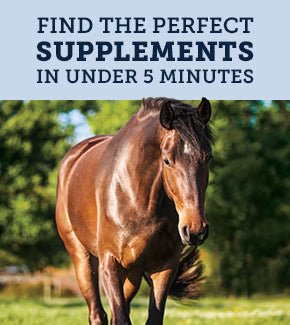Anatomy 101 of a Horse's Liver
The liver is a powerhouse organ in a horse's body, responsible for carrying out a wide range of essential functions. Located in the abdominal cavity just below the diaphragm, the liver is the largest internal organ in horses and is composed of specialized cells called hepatocytes and is organized into lobes that are connected to blood vessels and bile ducts.

Hepatocytes play a central role in the liver's functions, including:
1. Metabolism: The liver is crucial for metabolizing nutrients obtained from the diet, converting them into energy and essential building blocks for the body.
2. Detoxification: The liver filters out toxins and waste products from the bloodstream, preventing them from circulating throughout the body.
3. Protein synthesis: The liver produces proteins necessary for various bodily functions, such as blood clotting and immune system support.
With the ability to regenerate itself, the liver is able to repair and regenerate damaged tissue, aiding in its resilience and ability to bounce back from injury or illness.
What are the Symptoms of Liver Failure in Horses?
Liver failure in horses can manifest in various ways, and early detection is key to addressing the issue promptly. Here are some common symptoms to watch out for:
1. Jaundice: Yellowing of the skin, eyes, and mucous membranes due to the accumulation of bilirubin, a byproduct of red blood cell breakdown.
2. Weight loss: Unexplained weight loss despite a regular appetite may indicate compromised liver function.
3. Lethargy: A lack of energy and enthusiasm for daily activities could indicate liver dysfunction.
4. Swelling: Edema or fluid retention in the abdomen or limbs may suggest liver failure.
5. Neurological signs: Severe liver failure can lead to neurological symptoms like disorientation, head pressing, and seizures.
How Can You Improve Your Horse's Liver Function?
Supporting your horse's liver health is crucial for overall well-being. Here are some tips to help your equine friend maintain a healthy liver:
1. Balanced diet: Provide your horse with a well-rounded diet rich in fresh forage and high-quality feed. Avoid overfeeding and limit high-sugar or high-fat foods that can strain the liver.
2. Clean water: Ensure your horse has access to clean, fresh water at all times to support proper hydration and liver function.
3. Reduce toxin exposure: Minimize your horse's exposure to pesticides, herbicides, and other environmental toxins that can stress the liver.
4. Manage stress: Create a low-stress environment for your horse through ample turnout, socialization, and mental stimulation.
5. Liver support supplements: Incorporating liver support supplements or herbs into your horse's diet to aid in detoxification and liver function.
Seasonal Discomfort
Does your horse suffer from itchy skin, coughing, runny eyes or constantly rubbing their mane and tail on the fence come spring and fall? 1 in 2 Horses have severe seasonal discomfort in the spring and fall and that is due to a congested liver. The liver balances out histamine levels, which is why we see these seasonal symptoms when it is compromised.
The liver has to filter everything that comes in or near the body and if that filter gets clogged, that is where we run into problems! Think about it this way, do you change the oil/air filters in your vehicle? Yes, we have to, or your vehicle won’t run well after a while! The liver is the filter that needs to be cleaned twice a year.
Liver Detox
Detoxing your horse’s liver with the 27 Liver Support will support normal detoxing of toxins that build up over time. If you let their liver get congested, you could eventually run into 500 other issues!







